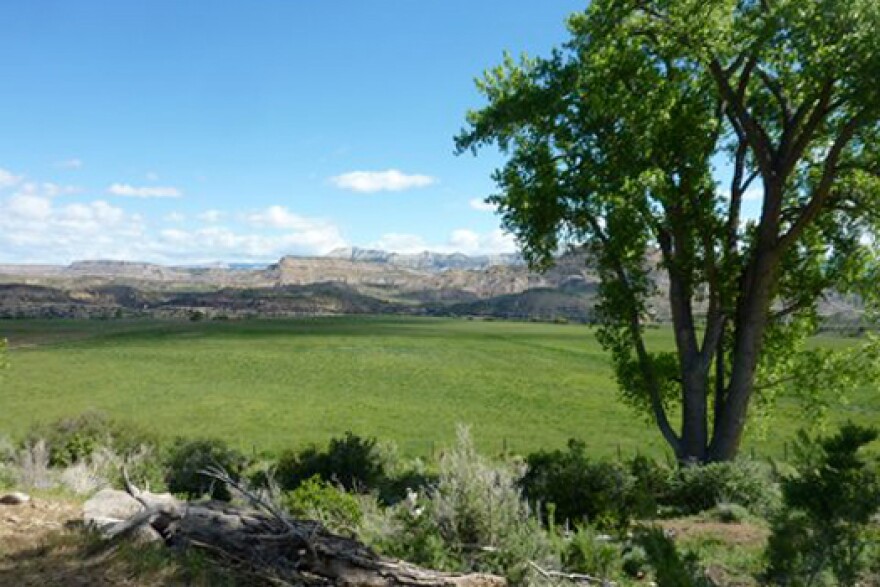Water has always been a source of conflict in the arid West, but in recent years the conflict between agriculture and growing cities has escalated as both entities compete for this limited resource.
Since the early 90s, the rate of population growth in Colorado has exceeded the national average, and since the year 2000, nearly one million people have migrated to the Centennial State. Demographers expect that trend to continue, reaching nearly 6 million people by the end of the decade.
This growth is expected mostly in the northern Front Range, and will continue to put even more pressure on an already scarce resource.
Jim Pokrandt with the Colorado River District doesn鈥檛 mince words in describing where growing cities are finding new water supplies.
鈥淎griculture has a big target on it,鈥� said Pokrandt. 鈥淭here are willing ranchers and farmers who are willing to sell their water to the cities.鈥�
In Colorado, are like property rights, so they can be bought and sold. When water rights are sold, agriculture often stops on the land. It鈥檚 a practice called Agricultural Water Transfer, more commonly known as 鈥渂uy and dry.鈥�
Carlyle Currier, a fourth generation rancher on the Grand Mesa overlooking Palisade, is an exception. His great-grandfather came to Mesa County in 1891, and he farms land that has been in his family for more than a hundred years. Currier also farms land owned by the Ute Water District, which provides water for Grand Junction and much of the Grand Valley. But the land hasn鈥檛 dried, because Currier has other water rights he can use on the farm.
鈥淚t鈥檚 been a good deal for me,鈥� Currier said. But, he added, 鈥淚t takes a lot of water to produce a ton of alfalfa, so it makes it easier for cities and municipal and industrial users to buy agricultural water and dry up agricultural land.鈥�

That鈥檚 been the fate of thousands of acres of agricultural land in the state. Agricultural water rights in some parts of Colorado can fetch thousands of dollars per acre-foot.
As Jim Pokrandt explains, for some farmers struggling to make ends meet, it鈥檚 a bittersweet deal that鈥檚 often too good to pass up.
鈥淚t鈥檚 a double-edged sword,鈥� said Pokrandt. 鈥淭he rancher wants to be able to sell his or her water right but then there鈥檚 also the concern in the ranching and farming community that we need to keep land in production.鈥�
It鈥檚 that long-term impact on farming that has many people concerned. Buy and dry has been more prevalent on the Front Range where most urban development is happening. In the 1980s, the city of Aurora bought water rights to dozens of farms in the Rocky Ford area leaving dried up farmland in its wake. Similarly, in the northeast, Thornton bought 120 farms in the region for their water rights in 1986.
Brian Werner with Northern Water has been following the buy and dry phenomenon for 30 years. He says the Thornton water grab raised some alarm bells in the local agricultural community.
Werner sees economics as the primary reason farmers sell their water.
鈥淭he price of water in Northern Colorado has doubled in 2013,鈥� Werner said. 鈥淪o it comes to a point where the farmer says, 鈥楤oy do I sell it at this price and go to Tahiti for the year or retire comfortably, or do I still struggle with trying to produce a crop with everything that Mother Nature has to offer whether it鈥檚 drought or flood?鈥� 鈥�
"Agriculture has a big target on it."
Approximately 80 percent of the state鈥檚 water goes toward agriculture, but that number is declining. In 1957, 85 percent of water rights on the Colorado Big Thompson Project in Northern Colorado were owned by farmers.
Today, Werner says that number is 33 percent.
鈥淭here are farmers that look at their water supply as their 401(k), it is how they鈥檙e going to retire,鈥� said Werner. 鈥淎nd you aren鈥檛 going to take that away from them and nor do we want to. But there is still 600,000-700,000 irrigated acres in northern Colorado, the northeastern quadrant, that are producing a lot of wealth for the state of Colorado. So, there鈥檚 a huge economic impact with that as well.鈥�
Werner and others advocate for increasing water storage in the state as an alternative to buy and dry. Reservoir expansion in Colorado has prompted opposition by many environmental groups. Werner says if municipalities don鈥檛 get the water from storage, they鈥檒l buy it from the farms, drying up the land.
鈥淲e鈥檙e not going to stop buy and dry, that isn鈥檛 going to happen, but what we hope to do is make sure that that鈥檚 not the only alternative for our future growth,鈥� said Werner.
Other alternatives include creating conservation easements, to help protect water supplies. Also, instead of selling outright, some farmers are leasing a portion of their water rights to local cities. But water suppliers contend owning the rights is really their only supply guarantee.
Water managers and farming advocates throughout the state do agree that long-term solutions must be sought if the state鈥檚 farming industry is to be protected, and the state鈥檚 growing population is to have enough water.
This story comes from 鈥楥onnecting the Drops鈥� - a collaboration between Rocky Mountain Community Radio and the Colorado Foundation for Water Education. Find out more at .






